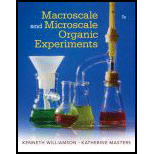
Interpretation:
The balanced
Concept introduction:
Peroxides are organic molecules that are sensitive to heat and are represented as
Answer to Problem 1Q
The product of the reaction between hydrogen ion, peroxide and iodide ion is water and iodine gas.
The balanced reaction is as given below,
The color of the formed product varies with the concentration of peroxide in the substrate. If the concentration is high the color is brown while low concentration gives a yellow color.
Explanation of Solution
The reaction between iodide ion, peroxide and hydrogen ion reacts to form water and iodine gas as a product. The reaction can be given as,
To balance the equation place a coefficient 2 in front of
The yellow color is of iodine gas. The concentration of the peroxide in the substrate decides the color of the product formed. If the concentration of peroxide is less the color is yellow while higher concentration leads to brown color.
Thus, the product of the reaction between hydrogen ion, peroxide and iodide ion is iodine gas and the color depends on the concentration of peroxide in the substrate.
Want to see more full solutions like this?
Chapter 2 Solutions
Macroscale and Microscale Organic Experiments
- which among sodium, nitrogen, phosphorus, and aluminum is most likely to form a strong acid with Oxygen?arrow_forwardWhat type of reaction(s) do two salts typically undergo? Explain.arrow_forwardwhat would you expect to happen if sodium methoxide were added to water ? Write the equation?arrow_forward
- Chapter #9, Question #5: The principal anion and cation of Lake Huron, one of the Great Lakes in North America, are, respectively, hydrogen carbonate and calcium. The concentration of the former is approximately 1.05 mmol L-1. Calculate the mass of solid calcium carbonate that would remain if 250 mL of Lake Huron water is evaporated to dryness.arrow_forwardSlake lime has a pH of 12. What is the hydrogen ion concentration of slake lime?arrow_forwardO Neutralisation O Addition O Polymerisation O Condensationarrow_forward
- Write the balanced equation for each reaction. Phases are optional. The carbonate ion (CO) acts as a Brønsted base with water. equation: The carbon-containing product from the first reaction acts as a Brønsted base with water. equation: The carbon-containing product from the second reaction decomposes into carbon dioxide gas and water. equation: Consider the products of the reactions. When the carbonate ion reacts with water, is the resulting solution acidic or basic? basic acidicarrow_forwardWhat happens to lime water?arrow_forwardWrite the correct molecular formula for the reaction between ammonium hydroxide solution and phosphoric acid solution.arrow_forward
- Write a balanced chemical equation for the equilibrium of ammonium in waterarrow_forwardSulfurous acid (H,SO,) is a polyprotic acid. Write balanced chemical equations for the sequence of reactions that sulfurous acid can undergo when it's dissolved in water.arrow_forwardsynonyms for phosphoric acidarrow_forward
 Macroscale and Microscale Organic ExperimentsChemistryISBN:9781305577190Author:Kenneth L. Williamson, Katherine M. MastersPublisher:Brooks Cole
Macroscale and Microscale Organic ExperimentsChemistryISBN:9781305577190Author:Kenneth L. Williamson, Katherine M. MastersPublisher:Brooks Cole
